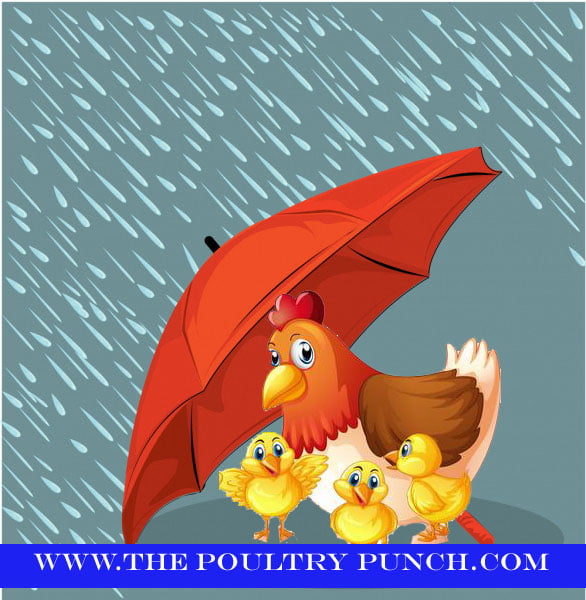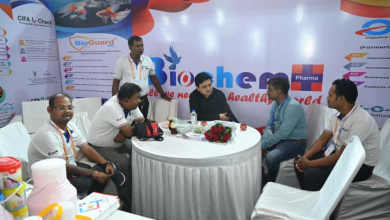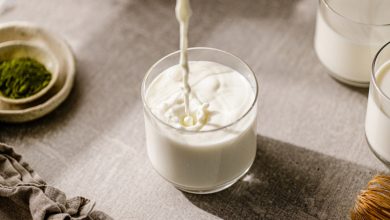Common Poultry Diseases during the Rainy Season – Signs, Prevention, and Treatment

[su_animate type=”slideInLeft” duration=”1″ delay=”2″]
Dr. Satuti Sharma1* and Dr. Anand Kumar Singh2
[su_heading align=”left”]Introduction[/su_heading]
Poultry sector is one of the fastest growing sector. Poultry production plays a vital role in providing employment, income, animal protein for both urban and rural population apart of being used as manure for crops. Although there is an increase in the supply of meat in the world, factors such as the handling, housing and rearing of birds in addition to disease control limit the progress of this industry still exist.
In monsoon season rainfall can occur continuously for many days leading to an increase in relative humidity and a reduction in temperature; hence, affecting both the quality and quantity of feeding, while wind speed has also an impact on the outbreak of diseases. These changes affect the production of birds, most especially laying birds, as the egg production is reduced in extremely cold or hot weather. This reduction in egg production occurs because when there are extreme cold or hot conditions, these birds are stressed, and their ability to withstand diseases or immune system is seriously affected. The poultry farmers should take necessary steps to minimise the losses. In this situation, farmers should follow measures :-
1) Arrangement of suitable shelter: To protect from the rain. Coops or roosts should be made available for your birds, in order to protect them from risks associated with cold wet grounds and any possibility of chickens to get wet. Stagnant water should also not be left in the chicken coops, as they serve as breeding ground for disease agents. The litter should also be kept dry and changed once it gets wet, as wet litter boosts microbial growth which can lead to potential outbreak of diseases, in addition to emission of toxic gases that are not conducive to poultry health. Keeping the environment fumigated against bacteria and germs is crucial at this period, so as to keep outbreak of diseases at bay.
2) Regular deworming: Drinking water from the ground leads to pathogenic and parasitic infection such as intestinal round worms, which are a common problem in chickens. When chickens get infected with worms, they tend to consume a lot of food without any improvement in their physical weight, and may remain too skinny for their breed. In order to address this problem, de-wormers should be given every three months, with strict adherence to label directions and professional advice.
3) Providing florescent light: For chickens, egg laying is usually stimulated by daytime length, as they require about 16 hours of daylight to aid maximum production. However, during rainy season, everywhere becomes cloudy and less daylight is available. This effect can be tackled by providing florescent light to simulate the daylight. With this, there will be sustained production level.
4.) Enough feed: In order to keep warm and generate heat, poultry tend to stay in clusters. Also, poultry will begin to change their eating habits during this period by increasing their feed consumption, so as to maintain the requisite body metabolism. Including an extra handful of feed with high starch content during this period provides them with some extra calories to burn in order to keep warm. It is advisable to purchase enough feed required for the season so as not to be caught in a fix when there is a need to restock. Feed should be stored properly in a dry environment, preferably on a wooden platform away from the ground and wall, in order to prevent molds and fungus formation, which is harmful for birds when consumed.
5) Assured with insurance coverage: In poultry farming, the wet season typically causes the birds to become stressed and this affects their production and their ability to withstand diseases through immunosuppression, leading to reduction in egg production. There is also a great chance for birds to experience various pathogenic and parasitic diseases such as Coccidiosis, fowl pox, E-coli and Salmonella, which may lead to poultry mortality. However, the extent of disease occurrence, morbidity and mortality during this season is majorly dependent on the type of management practices employed by you and the vaccination status of your flock. Then, since you cannot totally guarantee against some of these exigencies, it is advisable to protect your business from the devastating financial effect of any loss you may face during this season by getting an insurance coverage.
Some certain poultry diseases are rampant in the wet, rainy or cold seasons i.e. the onset of rain favours the propagation and spread of the causative organisms of these diseases and parasites. Hence, most poultry farmers experience high morbidity and mortality rate during this period.
Some of the diseases common during the rainy season will be discussed below.
1. Fowl pox
Fowl pox is a highly contagious disease that affects poultry birds at any age. It is caused by poxvirus transmitted by mostly mosquitoes and other blood-sucking insects. The reason why fowl pox is prevalent during the wet season is that mosquitoes, being the vector, breed well in this season due to the abundance of stagnant water. Also, the incidence of wet litter becomes apparent when poultry houses are not adequately shielded from rain. This leads to the development of wet litter which then predisposes to fly problems in the pen.
Fowl pox leads to the development of round lesions with scabby centers on the skin of the birds. The majority of the skin lesions are located on the wattle, face, comb, and some are occasionally located on the legs. This disease also affects the mouth and windpipe linings. The lesions that are formed in the throat can develop to the extent of blocking the throat and it could eventually lead to death as a result of suffocation. Lesions on the face can extend to the eyes, causing temporary or permanent blindness of the affected bird.
The mechanical carriers of fowl pox are mosquitoes. So it is advisable to reduce the mosquitoes around your farm or environment. Unfortunately, no treatment is available. Once the fowlpox virus has affected a bird. But as long as a diseased bird is eating and drinking, it will recover from the disease in about two weeks or more with low mortality rate. When a bird recovers successfully from fowlpox, it is immune to the disease permanently.
Ordinary sanitation and management practices will not avert this disease, so vaccination is often the solution. It is recommended to vaccinate chickens and turkeys such as breeders, egg layers, and those that are highly susceptible to fowl pox. Live fowlpox vaccine is administered in the wing web of birds within age 6 and 10 weeks. If aggressive pecking is controlled among birds, skin damage which fowl pox causes is reduced.
2. Fowl Cholera
Fowl Cholera is a bacterial disease that affects birds of age 6 weeks old and above. The bacterium responsible for this is Pasteurella multocida. It is highly contagious and mortality in acute cases is high. The causative organism is spread readily during the rainy season because wet litter serves as an abode of numerous microorganisms.
In acute cases, birds that appear healthy die suddenly while in chronic cases the affected birds show the following signs which are similar to those of fowl typhoid:
• Yellow, green or grey diarrhoea
• Loss of appetite
• Laboured breathing
• Drooped wings and tail feathers
• Ruffled feathers
• Swelling of the leg joints, sinuses, wattle and foot pad
• Twisting of the neck (torticolis)
• Discharge from the nostril or beak
Fowl cholera can be treated using sulfa drugs, tetracycline, and erythromycin. Poultry birds can be vaccinated against fowl cholera by administering a fowl cholera vaccine. Maintain proper hygiene and sanitation. Practice a high level of biosecurity and prevent rodents, wild birds, and other animals.
3. Salmonellosis, Escherichia coli, Pullorum disease (Bacillary white diarrhoea)
These bacterial diseases affect birds of all ages. They are endemic in farms or pens with poor sanitation, such as is seen when wet litter is allowed to stay for a long time. They affect the digestive system of the infected birds. The symptoms include-
• Severe diarrhoea
• Loss of appetite
• Depression and emaciation
• Chicks suffer omphalitis
• White pasty diarrhoea in pullorum disease
• Huddling together and laboured breathing
Salmonellosis, E. coli and Pullorum diseases can be treated by administering a broad-spectrum antibiotic to the flock. High-level farm/pen hygiene and sanitation must be maintained. Biosecurity measures should be in adopted. Avoid feeding birds with contaminated feeds.
4. Aspergillosis
Aspergillosis is the disease caused by Aspergillus fumigatus in poultry. Due to the high humidity during the cold season, feeds or litter dampens, thus creating a favourable environment for fungus to grow and thrive. The birds also inhale Aspergillus spores and these spores develop into lesions filling the lungs causing respiratory problems or discomforts. Birds under intensive management systems would experience high disease spread if the stocking density is high and ventilation is inadequate or poor.
There are a wide range of clinical signs presented in birds with aspergillosis. This is because they vary depending on how the chicken became infected, where lesions develop in their body, organ(s) involved, and their overall health status (immune system). Aspergillosis may be acute or chronic in nature.
• Acute form: This generally occurs in young chicks and results in high morbidity and mortality. Onset is very quick and usually develops within a week. Most affected birds will die within a few days without emergency veterinary care. The most common signs include; Lethargy, depression, loss of appetite, difficulty in breathing, and cyanosis (bluish/purplish comb).
• Chronic form: This is usually very subtle in onset, and it may take several weeks or months to develop. It is most common in older birds, many with a history of malnutrition, stress, concurrent illness, or prolonged antibiotic/corticosteroid use. The entire course of the disease ranges from less than 1 week to over 6 weeks in duration. The most common clinical signs observed include: Weight loss, reduced appetite, exercise intolerance, increased respiratory rate, changes in vocalization (voice), often more apparent in roosters, audible respiratory sounds, tail bobbing, open-mouthed breathing.
A presumptive diagnosis of aspergillosis can usually be made based on the history of the flock, clinical signs, and physical examination. In order for your veterinarian to obtain a definite diagnosis of aspergillosis, they will need to collect some samples and send to a diagnostic laboratory, to confirm the presence of Aspergillus in the bird.
Dry, good quality litter and feed and hygiene will help in the prevention of aspergillosis. Environmental spraying with effective antifungal antiseptic may help reduce the challenge. Amphotericin B and Nystatin have been used in high-value birds.
5. Coccidiosis
Coccidiosis is caused by protozoan Eimeria sp in poultry, most species infect various sites in the intestine. The infectious process is rapid (4–7 days) and is characterized by parasite replication in host cells with extensive damage to the intestinal mucosa. Poultry coccidia are generally host-specific, and the different species parasitize specific parts of the intestine. However, in game birds, including quail, the coccidia may parasitize the entire intestinal tract. Coccidia are distributed worldwide in poultry, game birds reared in captivity, and wild birds. The wet litter and the hot pen temperature commonly observed in the rainy season favours the sporulation of the coccidian oocyst and therefore, the outbreak of coccidiosis.
Clinically, bloody faeces, ruffled feathers, anaemia, and somnolence are observed. Other signs of coccidiosis range from decreased growth rate to a high percentage of visibly sick birds, severe diarrhoea, and high mortality. Feed and water consumption are depressed. Weight loss, development of culls, decreased egg production, and increased mortality may accompany outbreaks. Mild infections of intestinal species, which would otherwise be classed as subclinical, may cause depigmentation and potentially lead to secondary infection, particularly Clostridium spp infection. Survivors of severe infections recover in 10–14 days but may never recover lost performance.
The lesions are almost entirely in the intestinal tract and often have a distinctive location and appearance that is useful in diagnosis.
Once coccidiosis is diagnosed in a flock, all the birds need to be treated. Also, the litter needs to be changed so that birds do not pick up the sporulated oocyst from the droppings of affected birds. Common anticoccidial drugs include; Amprolium, toltrazuril, sulfaquinoxaline etc.
Basic hygiene is first step for prevention. It is good to ensure that the poultry house is generally clean and dry.
• Ensure water is clean and fresh. Keep feeding areas clean and dry.
• Ensure the birds have enough space i.e. overcrowding should be prevented as it is a predisposing factor for coccidiosis. Chickens need an average of a square meter for 3-5 birds.
• If chicks have not been vaccinated against coccidiosis, provide medicated starter feed for them. Anticoccidial medication should be given to the chicks at around 12 days of age (this might vary depending on the vaccination schedule being followed).
• An all-in all-out method should be employed on the farm in order to prevent a horizontal transfer of infection. If this method is not feasible, keep the new batch quarantined for a minimum of two weeks, for the protection of the current stock.
How to Manage Poultry Birds Optimally in the Cold or Rainy Season
To manage poultry such as chickens, turkeys, quails, duck, and pheasants during cold or rainy periods, poultry farmers have to do the following:
• Add oil or fat to the diet of the birds or reduce the level of nutrients that are not required by the birds to generate heat. This is necessary to avoid wastage and reduce feed production costs, since birds consume more feed to generate heat.
• Install electric bulbs or heater in the pen to serve as a secondary source of heat for the birds. This would help the birds drink enough water and stay warm without getting the reserved energy used up in the process.
• Though very rare in an intensive system but rampant in a free-range system, birds drink from the stagnant water around, thus pick up eggs of parasitic organisms such as intestinal worms. That is why it is important to deworm poultry birds bi-monthly with effective dewormers such as piperazine. A broad-spectrum antibiotic like oxytetracycline should be administered to the birds every month.
• Construct a generous roof overhang over the entrance and sides of pens to prevent rainwater from getting into the pen whenever it rains. Construct a foot dip at the entrances of the pens and a strong disinfectant solution should be in the foot dip always.
• Follow proper vaccination of birds at the right time.
[/su_animate]





Can you please share this document to my mail regarding common Poultry diseases during Rainy season
Kindly forward me your email address alongwith with your updated contact details to my number 7838602297 Amit Rana